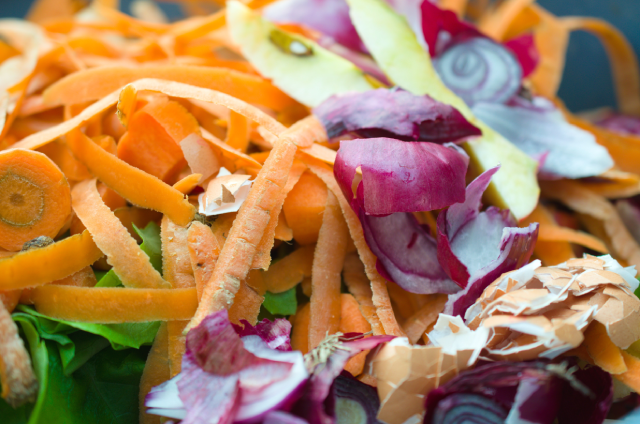Clearly, delicious menu items can help you attract customers. What you might not realize, however, is that the food you don't serve can persuade diners as much as the food you do.

That’s because restaurant patrons increasingly are paying attention to food waste. In fact, 55% of consumers say efforts to reduce food waste are an important factor they consider when deciding where to eat.
And here’s why: In the United States, 30 to 40% of the food supply is lost at the retail and consumer levels. That amounts to a whopping $161 billion worth of food, according to estimates from the U.S. Department of Agriculture.
Food waste can occur for a number of reasons. By making the following five tweaks to food production, however, operators can become less wasteful—and perhaps more profitable.
1. Measure Extra ElementsTracking your food waste volume—on a daily, weekly, monthly or quarterly basis—can help you discover opportunities for improvement.
According to one estimate, foodservice providers could save at least $1 billion by adopting food waste tracking and analytics practices—in particular, systems that capture the weight, type, and source of waste, which operators may be able to input into production planning systems in order to set accurate targets and reduce overproduction.
The tracking methods businesses use vary. More than half (65%) of table-service restaurant operators, for example, use pen and paper to record waste amounts; limited-service operators and chain/franchisee operators are more likely to use computer spreadsheets or charts (59% and 57%, respectively). Software and smartphone apps also are available to help with food waste tracking.
2. Fine-Tune Ingredient Estimates
To gauge the best amount to buy, base ingredient purchasing decisions on information such as past sales records, surplus food data and inventory logs. Chipotle Mexican Grill, for example, reduces food waste by customizing food preparation plans to each of its locations based on their individual sales.
Working with suppliers that can provide small quantities of fresh produce and other food may also help operators prevent overordering.
3. Give Scraps a Starring Role
Some eateries are creating entirely new food offerings from repurposed carrot tops, fruit peels and other items that would typically be deemed waste.
The University of Massachusetts Amherst, for instance, encourages its culinary team to create new dishes with food trim and surplus items, like a cake made with excess oatmeal from a breakfast buffet. The menu at Washington, D.C., tea house and cafe Teaism, meanwhile, features a “Trash or Treasure” section that contains items like broccoli tots, which are made with goat cheese and broccoli stems from the eatery’s bento dishes that otherwise would have been tossed.
4. Donate Extras
Roughly one in five restaurant operators donates leftover food to charitable organizations. That’s true of both limited- and table-service establishments. Olive Garden, for example, donates surplus pasta items to local community food banks; since 2003, the chain has contributed more than 40 million pounds of food, including 2.2 million pounds of chicken and 330,000 pounds of Parmesan cheese-packed fettuccine alfredo.
Half of restaurant operators say they don’t donate leftover food because of liability or general food safety concerns. Under the federal Bill Emerson Good Samaritan Food Donation Act of 1996, however, restaurants that donate leftover food to a nonprofit organization cannot be held criminally or civilly liable if a person becomes ill as a result of consuming it—as long as the food has been properly handled.
Restaurants also may be able to receive an enhanced federal tax deduction to help offset the costs involved with donating food to a nonprofit. Organizations such as Food Donation Connection and ReFED offer information about available incentives.
5. Recycle Organic Material
If leftover food can’t be used, composting can prevent it from ending up in a landfill. In fact, restaurants may be able to divert as much as 90% of their food waste with a recycling and composting program.
Currently, more than one in 10 operators composts food waste—including quick-service eatery 4food, which composts all of its food waste onsite using a self-contained bioreactor that converts food and biodegradable waste into water. The restaurant says the process has helped its two New York locations become nearly trash-free.
For maximum results, consider doing what 9% of restaurant and foodservice operators do: Compost both back- and front-of-house food waste.
Waste Not, Want Not
When it comes to food waste, less is definitely more. After all, when you save waste, you also save money. Whether your organization is able to recycle remaining food scraps, reduce excess production or give surplus servings away, such efforts can support both the environment and the bottom line.
Looking for more cost-saving operational tips? Sign up for Your Business, Saputo Cheese USA Inc.’s e-newsletter, to receive industry trends news and information each month.

